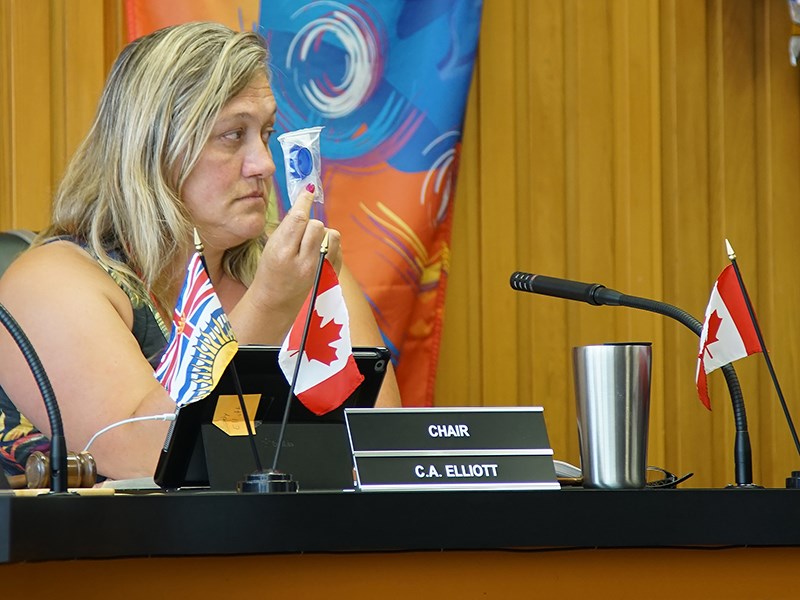City of Powell River Council recently received a letter urging councillors to promote naloxone training to raise awareness and fight stigma with regard to the fentanyl crisis.
The community, however, is already actively engaged in trying to stem the crisis and is taking significant steps to raise awareness.
At the Tuesday, June 18, committee of the whole meeting, mayor Dave Formosa said he asked to have the letter from the lower Sunshine Coast governments and first nation put on the agenda for everyone to see.
Councillor Maggie Hathaway said she thinks Powell River is well ahead of most communities in that Vancouver Coastal Health (VCH) has invested $100,000 for the community action team that has been founded in Powell River to help deal with the effects of the opioid crisis. Powell River has a high per capita death rate compared to most other centres in the VCH area.
“That allows us to do a lot of the stuff we are doing,” said Hathaway. “Everything that can be done is being done in Powell River.”
She said, however, that there had been another fentanyl-related death the night previous to the committee of the whole meeting, so the community does not yet have it in hand.
Councillor George Doubt said the community is doing a lot but it’s obviously not doing enough.
“More people are dying as we are talking,” he said. “We need to do more.”
Doubt said the same letter from the Sechelt governments was received by qathet Regional District and the determination was to refer it to the meeting in July between the city, qathet Regional District and Tla’amin Nation, known as the C3 meeting.
“Governments can get together and actually do what is being asked for in this letter, to do a public awareness event of some kind around naloxone kits, to make sure everybody is aware those are available,” said Doubt.
Hathaway said that at the C3 meeting there will be naloxone training for all those attending and the community action team will be there to answer questions. The community action team is also planning to do a public presentation at the Evergreen Theatre in the near future, she added.
Councillor CaroleAnn Leishman said the process is about reducing stigma and having more people trained, plus reaching out to let the community know there is training available.
Committee chair Cindy Elliott said she had recently attended a naloxone training session with the Métis nation. The trainer indicated that the goal within the next year is to have every single community organization in Powell River offer naloxone training to the groups. Along with the training, Elliott said participants are provided a free naloxone kit.
Councillor Rob Southcott, a retired paramedic, said it isn’t naloxone that saves lives, it’s ventilation: oxygen.
He said naloxone reverses the effect of the narcotic, but the first thing that is taught with naloxone training is ventilation, which is the process of providing breathing for the fentanyl victim.
Naloxone takes about three minutes to take effect and brain damage occurs within about five minutes, according to Southcott.
“There’s a very narrow window here,” he said.
In each naloxone kit is a plastic breathing interface that has a one-way valve that goes into an unconscious person’s mouth so artificial mouth-to-mouth respiration can be initiated. That, said Southcott, is the first line of approach.
Elliott had an example of the one-way valve, which she held up for councillors to see.
“They protect people from exchanging germs, one way or another,” said Elliott.
Hathaway suggested that council respond to the Sechelt letter and let them know what’s being done in Powell River, and to thank them for promoting the issue. A letter will be sent out under the mayor’s signature.



